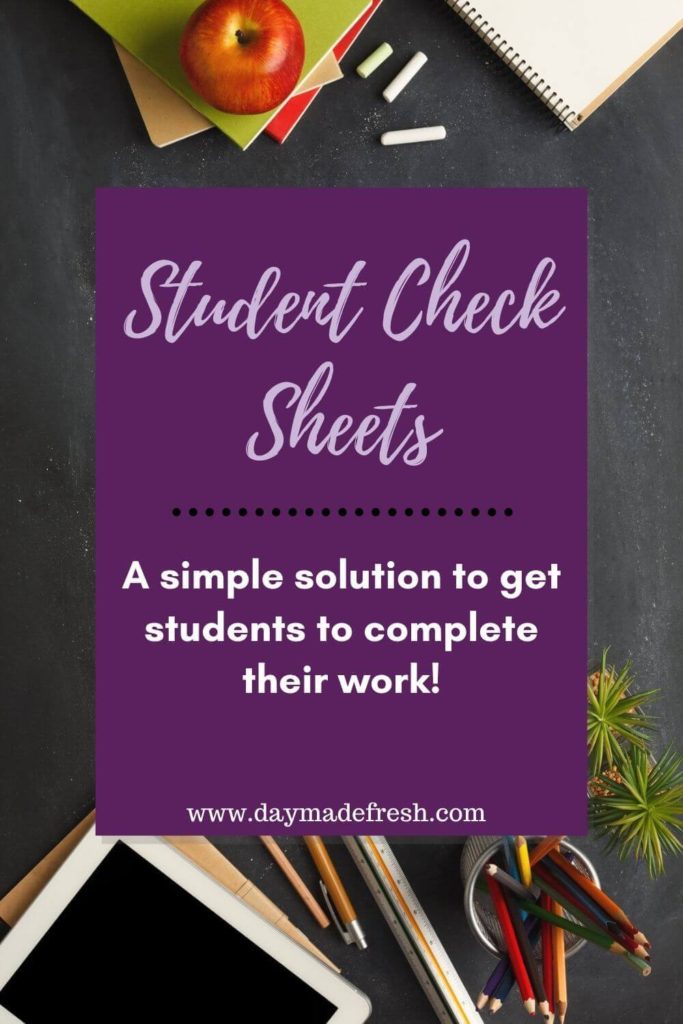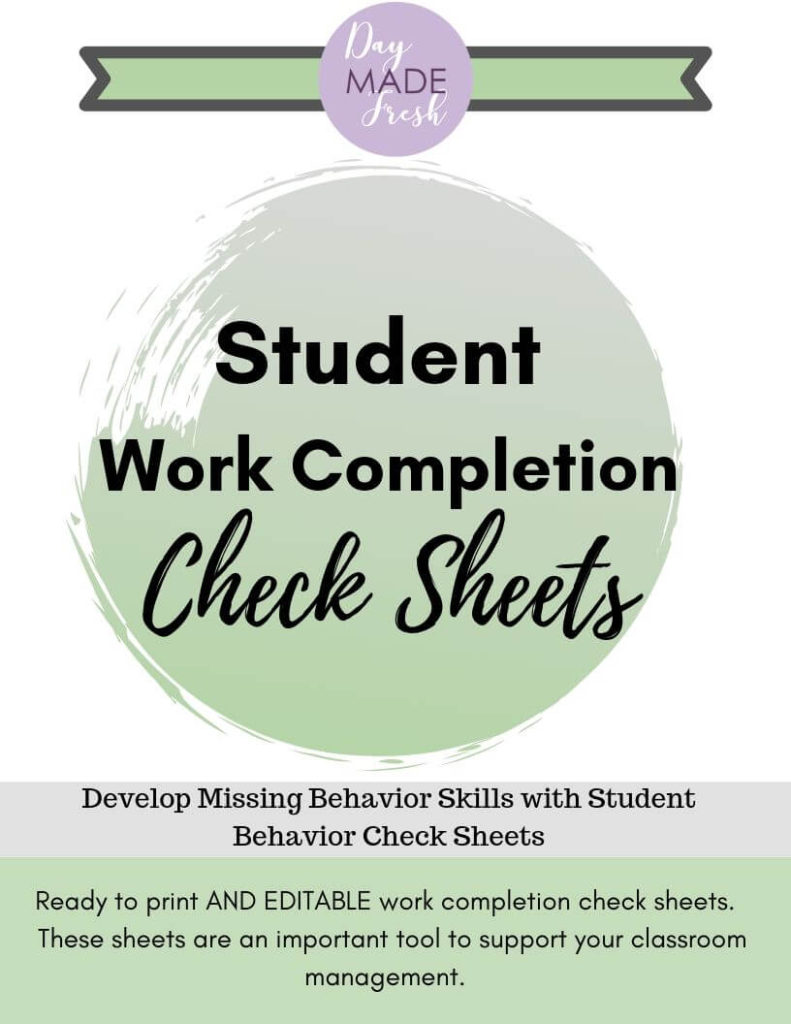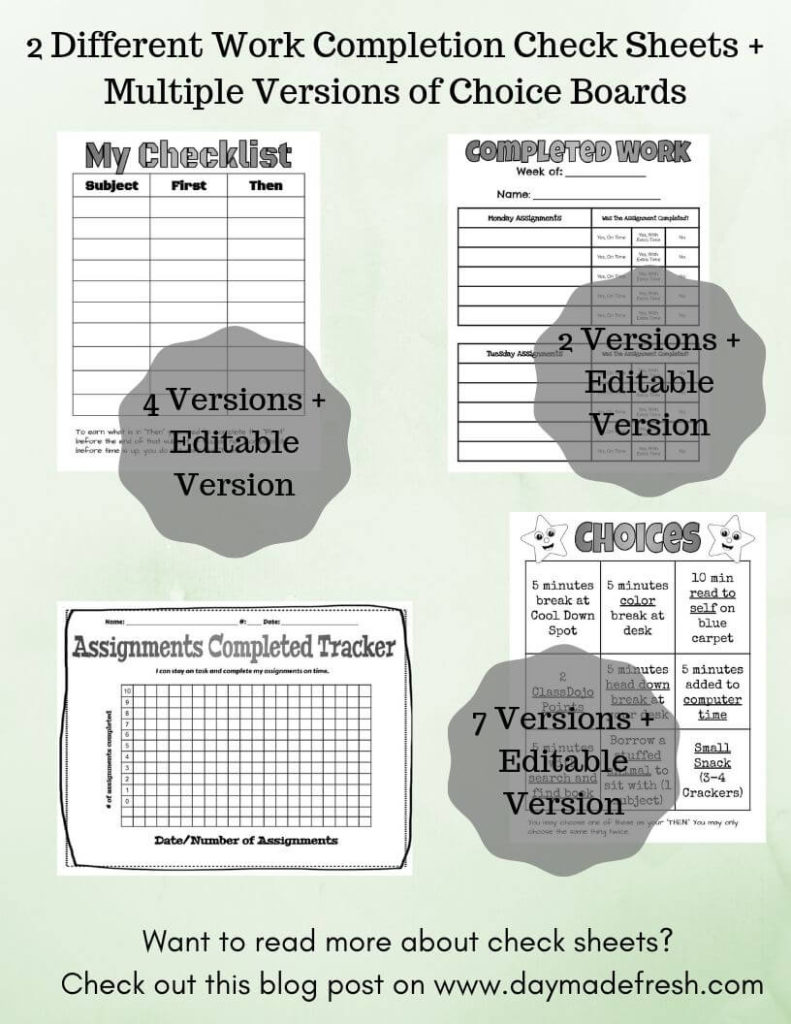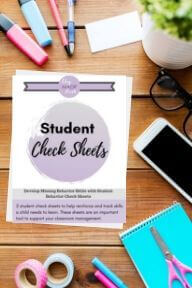One of the things we have to manage as a teacher is tracking students’ incomplete work. Then finding time for students to make up the work or deciding how to handle grading incomplete work. For elementary students, the focus is on helping them learn productive work habits. So, there is an expectation that students will get some leeway when it comes to incomplete work.
When lesson planning we plan for the time it will take for students to complete any assignments. We may even plan extra time for some students that take longer on assignments. Keeping track of who is finished, almost finished, struggling or way behind is often frustrating.
There is a fine balance of waiting for everyone to finish and staying on track with pacing. Especially when you have a few students that consistently struggle with work completion. It can be a daily frustration trying to coax those students through each assignment. So, how can we get elementary students to complete their work independently?
I’ve tried a variety of techniques. As I’m sure you have too. Some have worked while others have failed dismally.
To get elementary students to complete their work start thinking about it differently.
I’ve kept students in from recess, sent incomplete work home as homework, and given rewards to those that complete their work on time. For certain students, these techniques worked, but for others, they made no impact. Instead, they created unhappy, frustrated kids.
I don’t know about you, but I was tired of spending my plan or lunch time trying to get the same students to complete work. I decided I needed to look at students that don’t complete their work in a different way.
This post contains some affiliate links for your convenience. Click here to read my full disclosure policy.
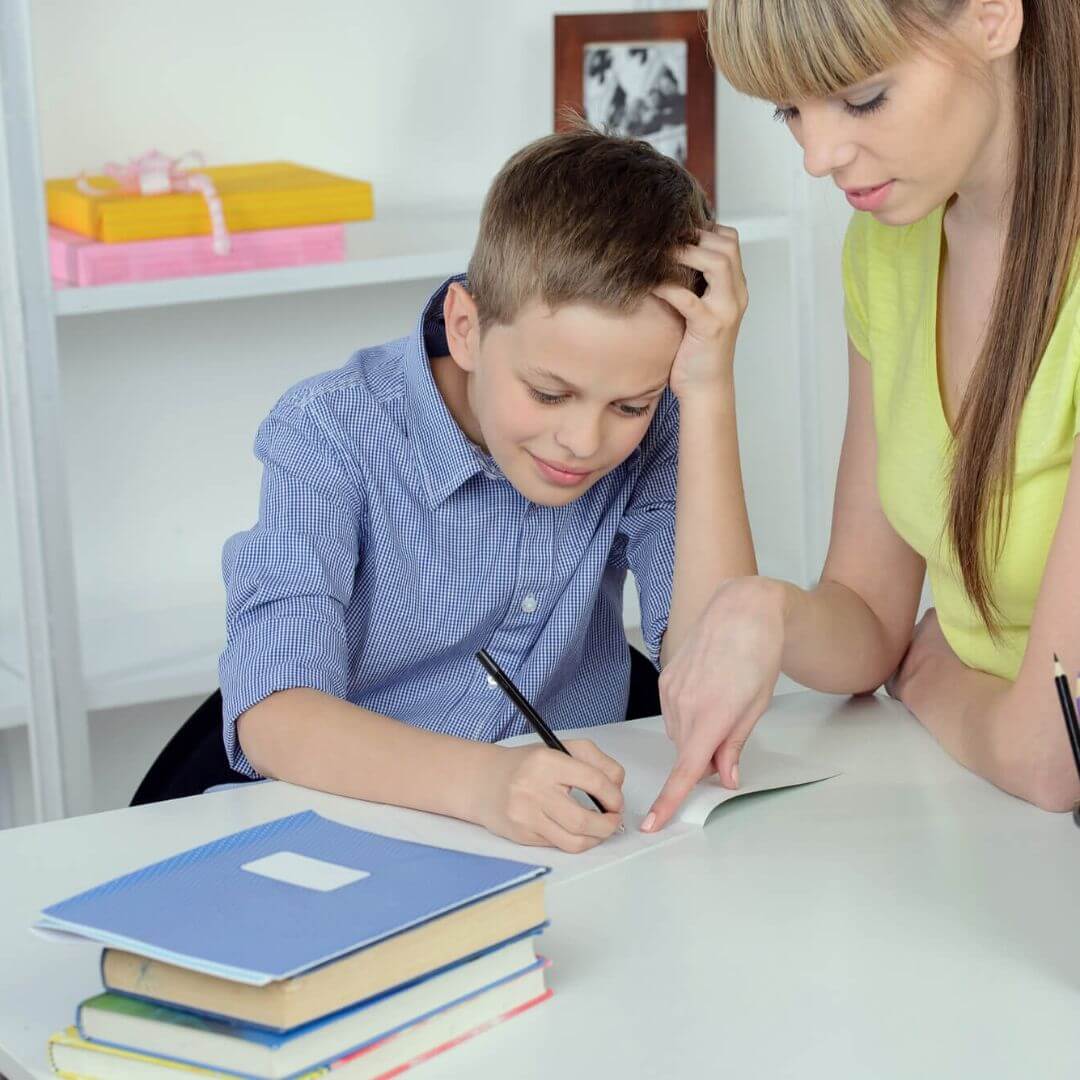
Kids ultimately want to do what is right, but there are often things that keep them from doing that. Often it is their own learned behavior(s) that get in their way. For instance, students that fear failure will learn that if they don’t try they can’t fail. Another student may learn that by procrastinating they can avoid putting in the effort and get a “break.”
These are learned behaviors. This means we have the power to help students learn new behaviors. That will, in turn, help them be successful in school and beyond.
What is the function of the student’s behavior?
The first thing to discover is the function of the student’s behavior. Why are they avoiding the work?
- Can the student do the work?
- Does this happen in all subjects or just certain subjects?
- Does the student focus on wanting things to be perfect?
- What does the student get by not completing the work?
To discover the answer to these questions observe and track the student’s behaviors. You may be surprised by what the underlying problem is. It’s a great way to learn more about your students in an unbiased way.
If you discover that the reason they struggle to complete their work is their ability to do the work. Then approach it differently than described below.
Make a plan to redirect the student’s behavior
Once you know what the function of the student’s avoidance of work is you’ll need to develop a plan. The plan should help redirect/ reteach the student to complete work. The plan needs to be two-fold. You’ll need to find what will motivate the student to complete work to develop a way to track their progress.
Often students don’t realize how little of their work they are completing. In their minds, they’re “working” ALL day, but in reality, they may be getting little to no work done. Tracking progress can help to motivate students. They will see the fruits of their effort once they start completing work.
Find a check sheet that works for your student’s plan
A check sheet is a great way to track student’s progress and track any rewards or breaks they’re earning. The key to finding the right check sheet for each student to help them complete their work. To find out more about check sheets check out this post: Student Behavior Check Sheets Help Students Develop Missing Skills.
A student that is not completing work to avoid putting in the effort is getting what they want. They’ve learned they can get “breaks” by not doing the work. This is the student that takes frequent bathroom or drink breaks. They take their time finding the right pencil. 😛 They may also have a sudden dramatic illness or injury that keeps them from learning. Our goal is to redirect these coping skills into a better use of their time. Ultimately, getting them to complete their work.
To help redirect their break seeking behavior teach them the habit of first things first. (from Stephen Covey’s 7 Habits of Highly Effective Kids). This habit teaches that we work first then play. To reinforce this habit use a check sheet. Track the work that the student completes for each subject and the choice they are working to earn.
Want to try some student check sheets to get your elementary students to complete their work? CLICK HERE to download a FREE check sheet sampler. Plus you’ll get some other great FREE classroom management downloads as well.
Introduce the plan and check sheet to the student
To make sure things go as planned it is important to get the student on board. Have a one-on-one meeting with the student to go over the plan and check sheet with the student. If the student seems hesitant you can offer them more choice and voice in the plan. This could even be as simple as changing the design of the check sheet by adding some fun clip art.
Looking for a variety of ready to print Student Work Completion Check sheets? Click here to get them now.
The key is to present the plan and check sheet as a tool to help them become more successful. It should not be seen as a punishment. However, this plan does not mean there won’t be consequences if they continue to not complete their work.
Once the student understands the plan have them practice using the plan and check sheet. This will help them feel comfortable and confident with the plan. Make sure the student understands how to transition back to learning once they’re done using their reward or break.
Tips for Success to get elementary students to complete their work
Be consistent. Especially at the beginning to reinforce the behaviors you want. Make sure to give the student their break or reward immediately when they are successful. This helps ensure that the behavior is reinforced. (I’ve learned from experience this can make or break the success of your plan).
Include non-break rewards. This rewards the student but allows them to keep working. I’ve found if I praise the student for choosing this type of reward they’re more likely to choose this reward in the future. This type of reward keeps them working to increase their work completion stamina.
Meet students where they are at. If the student currently can’t complete one assignment. You can start by giving them a reward if they complete part of an assignment. If they were completing no assignments even this is progress in the right direction.
Gradually pull back on the number of rewards or breaks they’re earning. For example, you could start with them earning something for completing one assignment. Then as they start to complete their work have them earn something after two assignments.
Trying to get elementary students to complete their work, day after day, can be a huge source of frustration. It can seem counter-intuitive rewarding kids for work they should complete anyway. It isn’t, you are working to retrain their behavior and teach successful work habits. They are still expected to complete their work. There should still be a consequence if they have incomplete work.
However, if you’ve given consequence after consequence and the behavior hasn’t changed… why not try something new?
Give student work completion check sheets a try for 30 days. In the end, you’ll learn more about your students. Plus if it doesn’t work you can always try something else.
